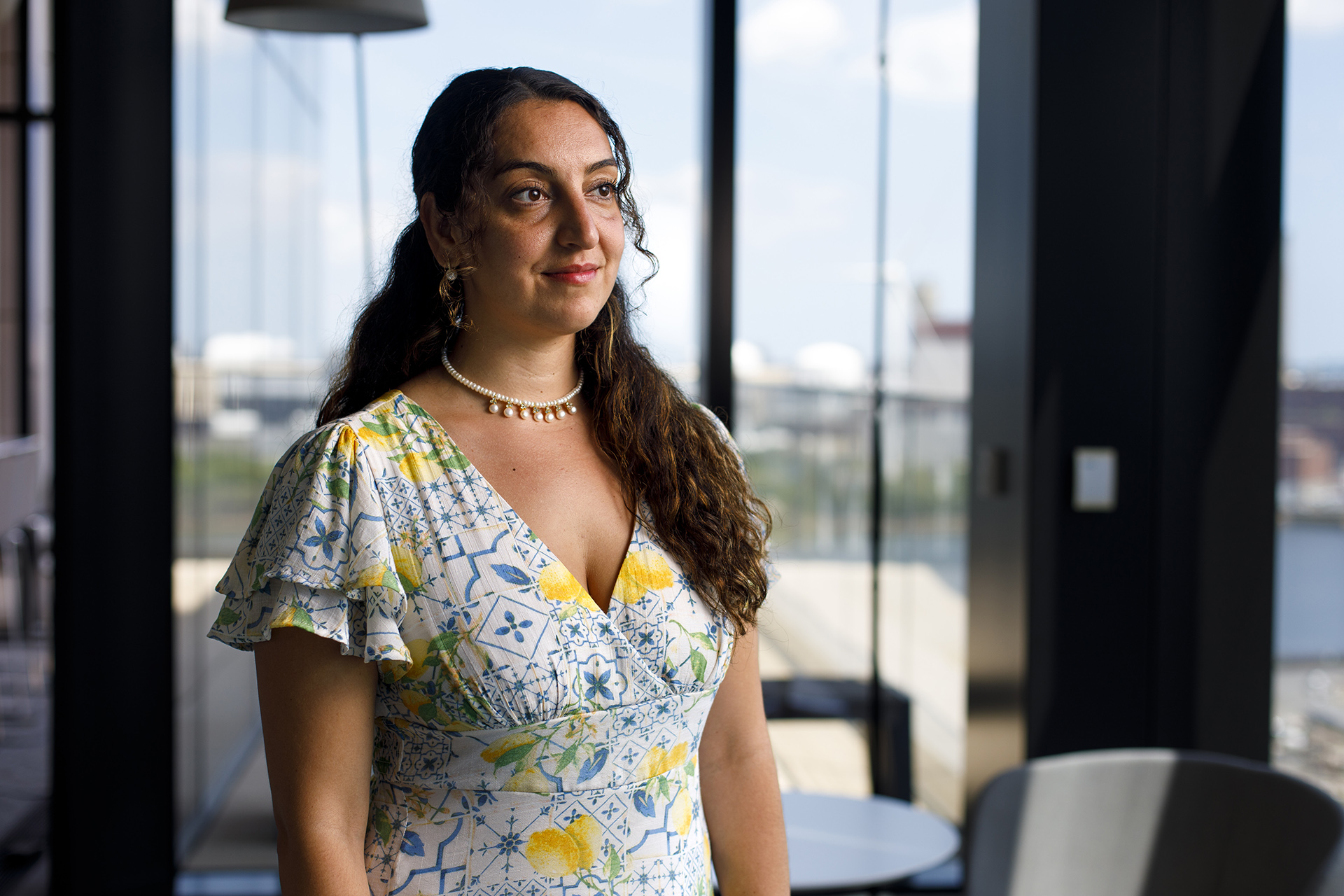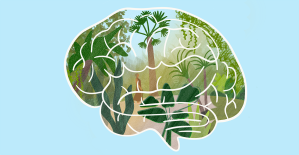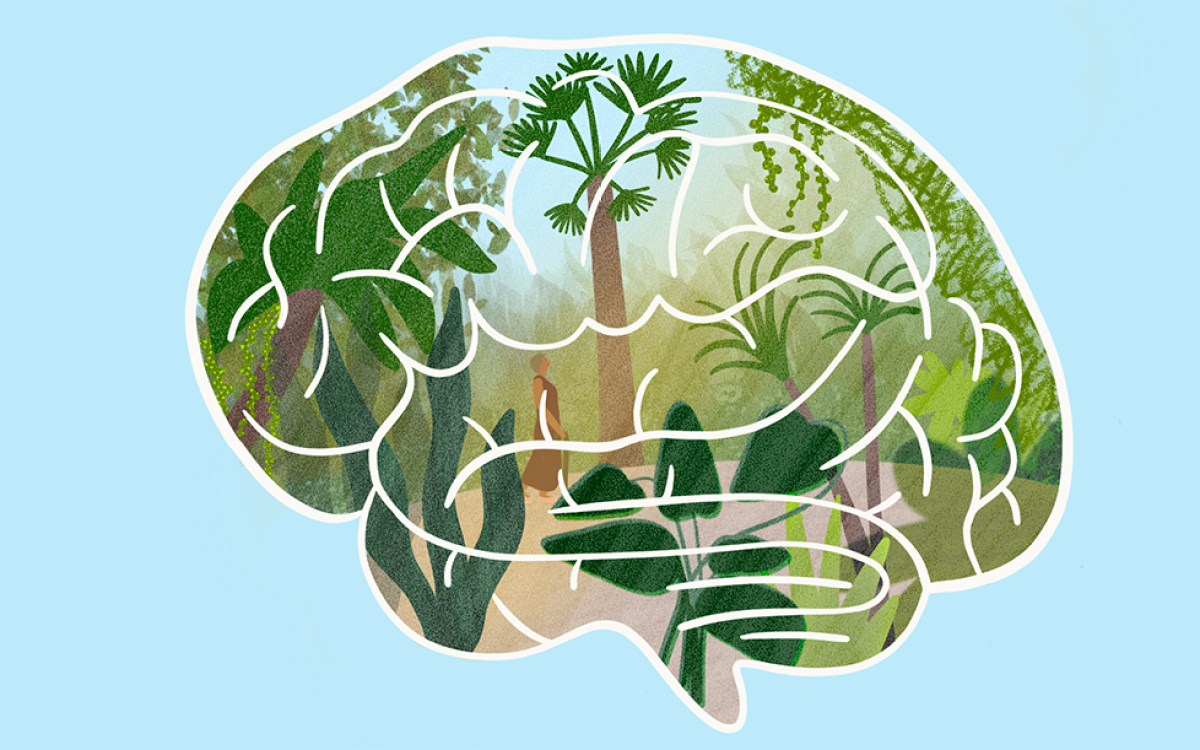
Veasey Conway/Harvard Staff Photographer
‘Hopeful message’ on brain disease
Researcher Sanjula Singh has looked at stroke, dementia, late-life depression for years, finds lifestyle changes make big difference
Sanjula Singh wants people to know that stroke, dementia, and depression are much more preventable than they might think.
“The most common misconception that a lot of people have is that Alzheimer’s or depression or stroke is like a train coming down the tracks,” said Singh, a principal investigator at Massachusetts General Hospital and Harvard Medical School’s Brain Care Labs who has been studying brain disease for years.
Though genetics plays a factor in developing these illnesses, Singh’s research has helped show that up to 80 percent of strokes, 45 percent of all instances of dementia, and 35 percent of late-life depression can be addressed through behavioral changes.
One of the most potent risk factors of dementia, Singh explained, is high blood pressure. Instead of focusing on treating diseases, Singh has aimed to help people avoid them in the first place.
“I think what I communicate is a very hopeful message,” she said. “There’s so much you have in your own hands that you can do to remain healthy and happy. … It’s so simple, but I think that’s what makes it so powerful.”
Singh, born to a family of doctors in the Netherlands, originally planned to be a singer-songwriter upon graduating from high school. But after studying at the Codarts Conservatory in Rotterdam, she felt drawn back toward science.
“I loved the creative process, and I also loved solving complex problems. I realized I didn’t have to choose — I wanted a life that made room for both.”
“There’s so much you have in your own hands that you can do to remain healthy and happy. … It’s so simple, but I think that’s what makes it so powerful.”
After traveling around the world, she began at medical school the next year, at first aiming to become a neurosurgeon.
Hoping to make an impression on Bart Brouwers, a neurosurgeon who she thought might have room in his lab, she spent a full night during her first year of medical school trying to memorize his dissertation. He referred her to Gabriël Rinkel, a professor of neurology at University Medical Centre Utrecht. Though Singh hadn’t yet taken a course on the brain, Rinkel said she could start working on research that would later become her Ph.D. thesis.
As she navigated medical school in Utrecht, it was the research side that fascinated her most. She spent much of her neurosurgery Ph.D. studying the cerebellar intracerebral hemorrhage, a deadly subtype of stroke in the cerebellum.
The results of her research would eventually result in changes to international treatment guidance for the disease. Though that was a rewarding outcome, she also had the realization that, while her work could help a small group of people, it wouldn’t stop strokes from happening.
“I wanted to be on the forefront,” she said. “I wanted to prevent the suffering.”
She got her first major exposure to some of these modifiable risk factors in grad school while working in the lab of Josh Goldstein, professor of emergency medicine at Harvard Medical School and a co-supervisor along with Rinkel. Her work covered specific neurosurgical topics, but she started seeing how influential modifiable risk factors were — even for those who had already suffered a stroke.
To learn how to develop questions and conduct analytical research about these risk factors, she took a year to study epidemiology and statistics during a master’s degree at the University of Oxford.
“I came across so many great datasets in which I just saw how much brain disease could be prevented,” she said, “but I wasn’t sure who was truly leading that work.”
80% —Of strokes are attributable to modifiable risk factors, according to Singh’s research
Singh hadn’t planned to return to the U.S. after completing her Ph.D., until Jonathan Rosand, a Harvard professor of neurology and member of her Ph.D. dissertation committee, changed her mind.
During a walk-and-talk, Rosand shared his vision for a new lab focused on preventing brain disease, which would go on to take the name Brain Care Labs.
“I believed in him — and in what he was building,” Singh said. “I told him, ‘I want you to be my mentor. Wherever you go, I’ll follow.’”
At the Brain Care Labs, Singh began spending her time exploring brain health and the factors controlling it. In 2022, she was the lead author of “Brain health begins with brain care,” an article in The Lancet that called for a rapid response to what major health organizations have called a global brain-health crisis.
“Although prevention of brain disease is yet to be a focus of primary care medicine,” she wrote, “a crucial opportunity exists to leverage the global acceptance that more than 40 percent of dementia, stroke, and depression cases are attributable to modifiable risk factors.”
With her new colleagues, Singh helped develop the Brain Care Score, a tool for people to gauge how their habits affect their brain health, backed by data collected from hundreds of thousands of adults followed for more than a decade.
Instead of simply predicting disease, the score was designed to help people modify risk factors that can increase the chance of stroke, dementia, and depression. Those risk factors span three domains: physical (e.g., blood pressure, blood sugar, cholesterol), lifestyle (diet, exercise, sleep), and social-emotional (stress, relationships, purpose in life).
“It doesn’t matter where you’re starting. What matters is that you begin. Improving — even just a little — is the way forward.”
Singh continues to build upon her research to strengthen the scientific link between modifiable risk factors and brain diseases.
Recently, she and her team identified 17 overlapping factors that affect one’s risk of stroke, dementia, and late-life depression. By knowing and adjusting even one of these factors, people can reduce their risk of suffering from brain diseases long thought to be intractable.
“Start with something small and doable,” Singh said. “Those first steps can create momentum — and over time, they can lead to powerful change.”
As Singh figures out what causes brain diseases, she’s also working on helping people adjust their lifestyles. “We know behavior change is really hard,” she said, “and, amongst other things, we know that individual health coaching can actually work.”
She and her labmates are approaching implementation from a few levels. Through the Global Brain Care Coalition Rosand founded in 2024, Singh and her colleagues have developed community-specific Brain Care Scores to make sure adjustments to factors such as diet are relevant and applicable to different cultural groups across the world.
They’ve also recently applied for a grant for an AI Avatar that can help coach people toward small changes in their daily life.
They’re building physical tools, too, like a product to improve medication adherence that they’re now testing in a clinical trial. Singh imagines creating a whole suite of products that can help people manage their health in easy, accessible ways. She wants to make products that can blend right into a living room — unobtrusive ways for people to improve their health.
This impulse has brought her back to school again — this time to an M.B.A. program at Columbia, where she’s trying to turn her ideas into products.
“I want to make sure people have easy tools that can be integrated into their households that are fun, that are artsy, and that will actually have impact.”
Singh believes brain health deserves the same level of awareness and action as heart health.
“The major papers are out,” she said. “We’re getting the signs out there.” The real impact, she knows, will come when people incorporate the research into their lives. “It doesn’t matter where you’re starting,” she said. “What matters is that you begin. Improving — even just a little — is the way forward.”





